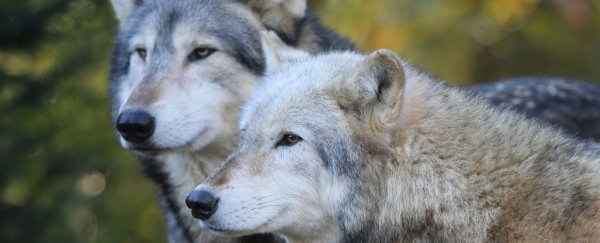This article was written by Keith Dobney, from the University of Aberdeen, and was originally published by The Conversation.
Domestic dogs and cats might be a phenomenal evolutionary success story but we still know remarkably little about how, why and when these animals first became part of our human world.
Archaeologists have been on the trail of these human-animal relationships for decades, searching for clues in the bones excavated from sites around the world. Geneticists are now helping to address these questions, and adding to a picture that is both changing rapidly and becoming more confusing.
The dog has a very special (and unique) history with humans. Remains from Israel, Germany and central Russia clearly document that they were already part of our lives as early as 15,000 years ago. This makes the dog the only domestic animal to have existed before the agricultural revolution – one of the most fundamental shifts in our own evolutionary history.
We know the Eurasian grey wolf (Canis lupus) is the ancestor of all modern dogs. Early genetic studies (using "molecular clock" calculations now refuted) controversially pushed its domestication history back to more than 100,000 years ago, while more recent morphological studies have claimed that dog domestication began around 32,000 years ago – during the last Ice Age.
Where this first occurred remains equally problematic, with both the archaeological and genetic evidence indicating single or multiple places in Europe, the Near East, Russia or China. The latest study, by researchers at Cornell, suggests the original dogs could be found in Central Asia.
Zooarchaeologists and geneticists (including myself) from across the world are currently working together to test these many claims and counter-claims.
Wary wolves become domestic dogs
We used to think that dogs were the result of direct human intervention, with wolf cubs being caught, tamed and eventually bred. However, the now generally accepted view is that wolves essentially "self-domesticated".
 Related to wolves. Distantly. Credit: Mike Segar / Reuters
Related to wolves. Distantly. Credit: Mike Segar / Reuters
This involved a more long-term relationship, driven initially not by direct human intervention but by the local ecological conditions they created. In this scenario, human leftovers drew certain wolves closer to campsites and perhaps led some individuals or even small packs to follow human hunters in search of easy pickings. The presence of wolves so close to human settlements perhaps also had the effect of preventing other dangerous carnivores from straying too close – creating a loose but mutually-beneficial partnership. Over time, these wolves became more and more accustomed to humans until eventually new selection pressures changed them from wolves to dogs.
Biologists would call such a relationship "commensal" – that is, where one organism benefits from another without causing any harmful side-effects. Archaeologists have since borrowed the term to describe the path to domestication in wolves, cats and even some other farmyard animals like the pig. However, the reality of what some term "proto-domestication" is often more complex. The transition from wolf to dog, or boar to pig, involves the acquisition of a new and important capability to exploit or totally rely on the human environment.
Broad commensal relationships between humans and carnivores certainly do exist – some wolves enjoy scavenging rubbish, for instance. Likewise, carnivores such as cats may well have been highly dependent on predating other commensal (pest) species, such as mice and rats, which may have been infesting human grain stores. But commensal animals rarely have a neutral effect on humans, since they consume crops, steal food and provide a reservoir for disease.
Because humans have such a big impact on local ecosystems, and there are so many different ways other organisms living in and exploiting new human-made environments can interact with us (and vice versa), perhaps we need to change how we think about this. We need a way of talking about the early phases of animal domestication that fully integrates both the biological and cultural factors involved. You won't find messy Palaeolithic eating habits listed as a textbook "evolutionary pressure", but without them it's possible we wouldn't have dogs today.
Assessing key human-animal relationships during the early phases of proto-domestication is an immense challenge, but one that will be important in establishing if those relationships were simply opportunistic, or involved a true commensal pathway whereby species became dependent on humans before being domesticated.
Living as I do with my own dogs and cats, I know that I can at least be sure of two things: dogs are ecstatically happy that they managed to domesticate themselves, while cats are utterly indifferent about their remarkable skills at domesticating humans.
![]() Keith Dobney, Professor and Sixth Century Chair of Human Palaeoecology, University of Aberdeen
Keith Dobney, Professor and Sixth Century Chair of Human Palaeoecology, University of Aberdeen
This article was originally published on The Conversation. Read the original article.
